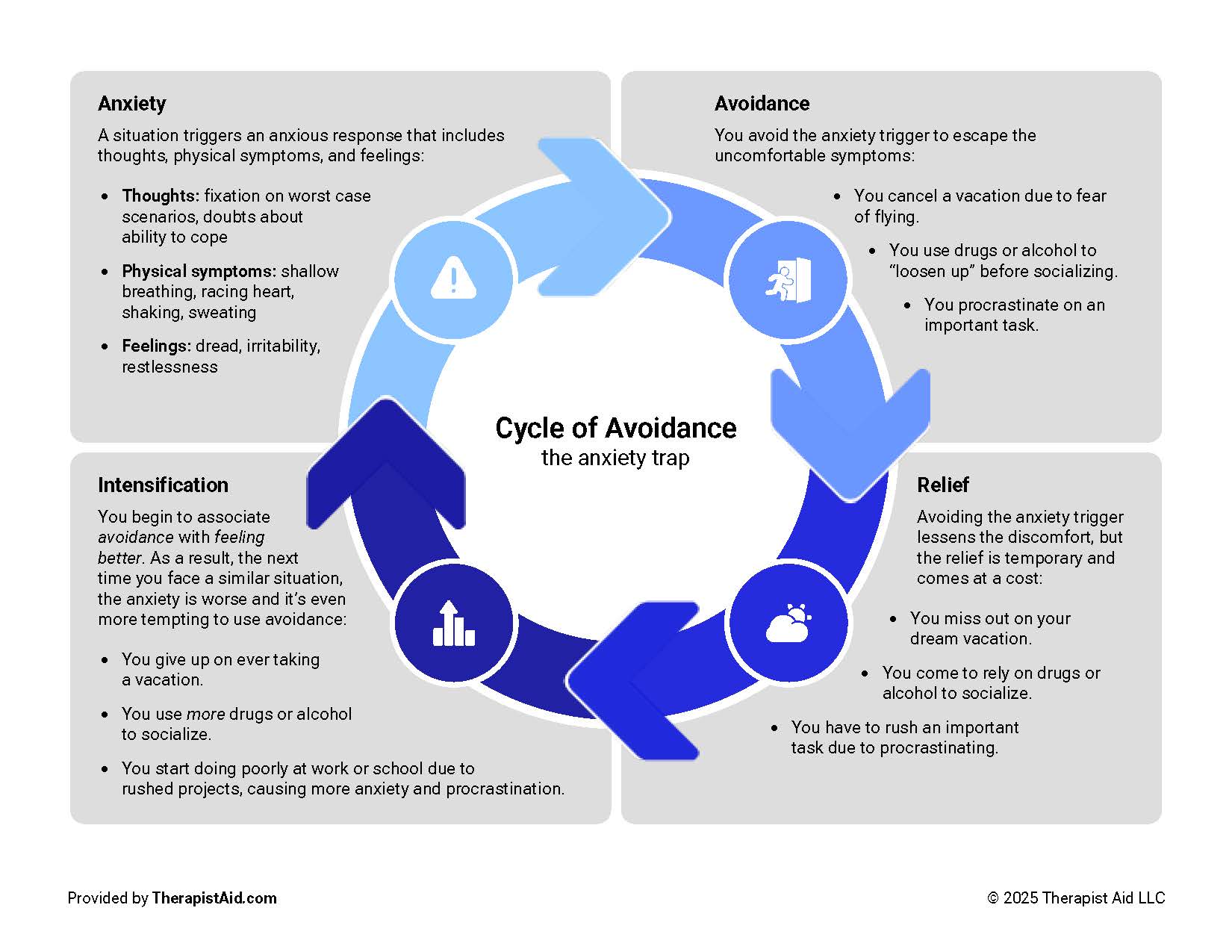
Part 2: How Avoidance Fuels Anxiety
How Avoidance Fuels Anxiety and What To Do Instead

We like to believe that avoiding the hard stuff will make life easier. That unopened bill, the unread email, the conversation we keep putting off — maybe if we don’t look, the discomfort will go away.
Avoidance feels safe. But here’s the paradox: it’s actually the biggest fuel source for anxiety.
The Illusion of Safety
Avoidance gives us a quick hit of relief. You don’t have to face the bank balance. You don’t have to risk rejection by sharing your work. You don’t have to open the stats on your newsletter.
But what happens next? The worry grows louder. The self-doubt circles back. The mind loops, the body leads. Your body knows the truth you’re avoiding, and the tension only builds.
Every day examples
I’ll give you one of mine: QuickBooks. For months, I avoided logging in. The relief of not looking lasted only seconds. The anxiety lingered for months.
I’ve also seen the same pattern in others:
The unopened bank account: not wanting to see “not enough money.”
The newsletter stats: not wanting to face low open rates = “people don’t care.”
The hidden gifts: not stepping into talents because of fear they’ll be dismissed or rejected.
Avoidance doesn’t erase the problem.
It magnifies it.
What the Research Shows
Psychologists call this the avoidance-anxiety cycle. Avoidance is reinforced because it relieves stress short term, but it makes anxiety worse long term.

Exposure research shows the opposite: gradually facing discomfort reduces anxiety. It's important to know what you want to face, what you're ready to face, and how much you can handle at a time. Exposure therapy is an approach to work with slowly and with someone who can support you.
In the spiritual and mindfulness arenas, Pema Chödrön writes, leaning into discomfort isn’t punishment — it’s the way we grow. Facing our fears, anxieties, and uncomfortable thoughts and emotions is the path to growth.
Facing Instead of Fleeing
So what’s the alternative? Start small. Identify what you’re avoiding and ask:
What’s the risk if I face this?
What story am I telling myself?
What growth is possible if I do it anyway?
Here’s the kicker: facing what you fear isn’t about fixing everything overnight. It’s about reclaiming power, one step at a time.
The Hard Truth
Here’s the sting: you’re the common denominator in everything that’s not working.
That doesn’t mean you’re broken. You’re not broken, but something sure is. And if avoidance is your default, that “something” is how you’re handling discomfort.
The good news? If you’re the common denominator, you’re also the change-maker.

A Question for You
What’s one thing you’ve been avoiding that you could take a small step toward today?
Not the whole mountain. Just one stone at the base.
Because avoidance feels safe, but it’s keeping you stuck. Facing the truth is where growth begins.
And that brings us to the next part of the process: anxiety isn’t just about what we run from. It’s also about what we’re being called toward. That’s where we’ll go next.
Citations
1.American Psychiatric Association. (2013). Diagnostic and statistical manual of mental disorders (5th ed.)
2.Harris, R. (2022). The happiness trap: How to stop struggling and start living (2nd ed.). Shambhala Publications.
3.Mkrtchian, A., Aylward, J., Dayan, P., Roiser, J. P., & Robinson, O. J. (2017). Modeling avoidance in mood and anxiety disorders using reinforcement learning. Biological Psychiatry, 82(7), 532-539.